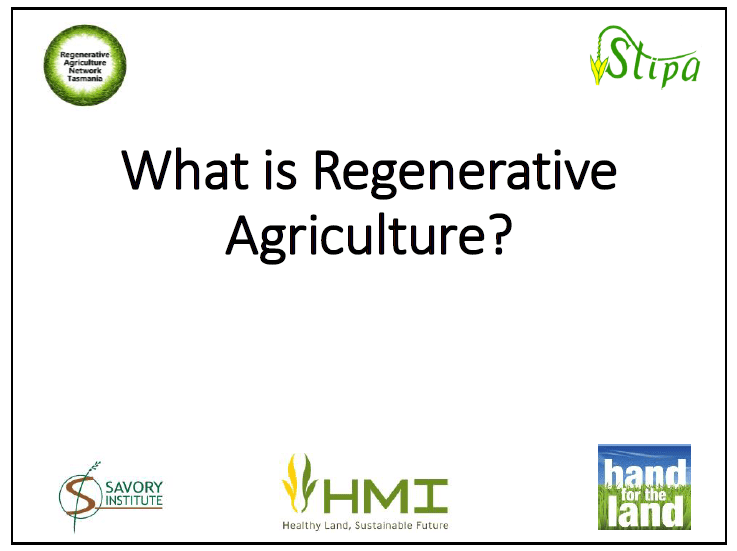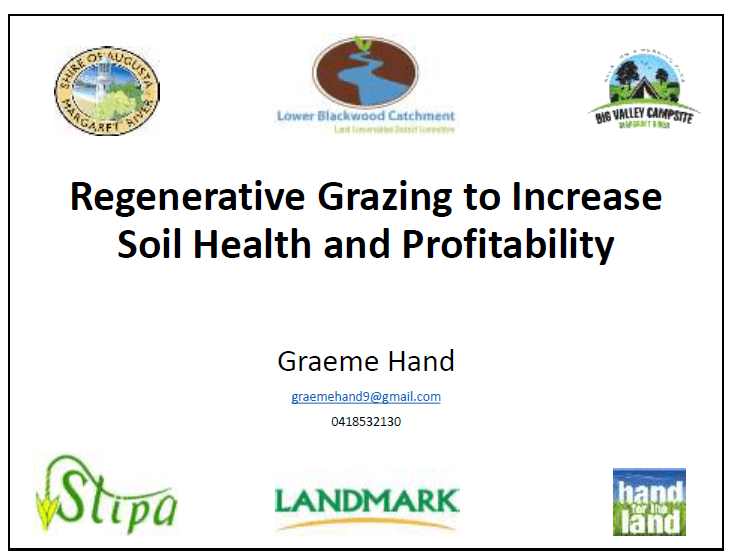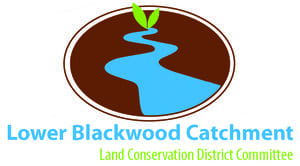Grazing Management
This exciting project focuses on Regenerative Grazing Management – this is a structured way of using animals to regenerate pasture, improve soil health and soil carbon storage of soils and improve grazing profitability. This process builds organic material and carbon which in turn supports better nutrient cycling & improved water holding capacity.
The fundamental principle behind this management technique is to use livestock to improve the long-term health and resilience of pastures. Regenerative grazing has the potential to not only significantly reduce costs for the farmer, but also improve the land’s resilience to increasing climate variability.
The Program:
Component 1: A 1 day workshop & field walk on“Regenerative Grazing to Increase Soil Health and Profitability”
Facilitated by regen grazing management expert Graeme Hand, the workshop will take a warts & all look at:
- animal health and performance,
- pasture pests and weeds,
- reducing fertiliser requirements,
- improving water infiltration,
- eliminating erosion,
- regenerating perennial grasses and
- boosting soil biology
Practice areas will be set up to gauge perennial grass recovery period and stock density that regenerates perennial grass pastures on your farm.
Component 2: On-ground Regenerative Grazing Resource Pack
This includes mobile fencing and/or mobile watering points up to the value of $2000 per pack.
Component 3: Individual Farm Consults
with regenerative grazing management expert Graeme Hand (1 per participant) to develop a tailored regenerative grazing management plan for their farm.
Other Project Components:
– 2 on-farm Regenerative Grazing Demonstration Sites will be established with Field Days to assist extension.
– To increase the reach and the longevity of the information disseminated in the workshop and field days, a comprehensive information hub as a ‘go to’ resource for landholders in the region will be developed. This Regen Ag Knowledge Bank will be housed on this website.
Who is Graeme Hand?
Graeme Hand farms beef cattle in Tasmania and NSW and is the CEO of Stipa Native Grasses Association. He also runs his own consultancy business and has delivered workshops across Australia & internationally to cropping and grazing farmers on farm financial health checks, planned grazing and forage & cover cropping.
Graeme has worked as an industrial chemist, international marketer, meat industry consultant as well as farm consultant to many family and corporate farmers. He is based in the Huon Valley in southern Tasmania, and has a special interest in working with family farms helping to create profitable, sustainable farm businesses which are enjoyable to work in.
Graeme trains throughout Australia on regenerating grasslands using planned grazing management. He has also carried out bushfire and drought extension for Victorian DPI, provided Holistic Management® training for CMA’s and universities, consulted for the meat industry on eating quality and marketing as well as currently managing STIPA Native Grass Association Inc.
KEY PROGRAM DATES
- Thursday September 25th: Participant Program Applications Open
- Friday October 25th: Participant Program Applications Close
- October 2019 to February 2020: Area fenced off for grazing practice.
- Monday February 10th: 1 day workshop & field walk on“Regenerative Grazing to Increase Soil Health and Profitability”
- Tuesday February 11th to Friday February 14th: Individual participant farm consultations
- October 2020: Project Completion.
This project has been enabled through the Augusta Margaret River Environmental Management Fund.
Presentation & Tools


Key Presentation Points:
- It’s not how long you graze a paddock that’s important, but how much rest it gets before you come back to it.
- Move animals based on gut fill or before they start to eat down to the litter layer. (Note: If you are moving your animals based on gut fill or before they start to graze the litter layer (sheep) then you are not going to be leaving them in one place long enough that their grazing of regrowth is going to be a problem, apart from patches here and there. If it is, it just means you are overstocked).
- Don’t graze a paddock until the grass is at the stage where the lower leaves are decomposing and creating litter. You want to trample this litter onto the soil to build new soil. This is fundamental.
- Use ‘safe to fail’ practice areas to establish how much time it takes for pasture to recover fully. Rest will allow perennial grasses to come back from the soil seed bank.
- The idea is to have a high density of animals in a small area for a short period of time and then give paddock a long rest. In our area that’s going to be probably a minimum 6 months rest – this will be ascertained by the ‘safe to fail’ practice areas.
- That means you need lots of paddocks. At least 30 is recommended. Then strip graze away from the water point in each paddock if you can.
- Dung is a good indicator of animal health.
- Creating a grazing plan by working out how many days you are going to graze each paddock based on its size and productivity and that will allow sufficient rest before you come back to it.
- The hardest decision you make will be to sell stock when you realise you are overstocked. This must be done immediately. Or you have to make a decision to supplementary feed which is often not economical. Most conventional farms are overstocked.
- Use Holistic Management it integrate your planned grazing into the big picture of what you are trying to achieve. What is key however is to monitor and adjust your plan on a continual basis based observation of gut fill, dung scores and monitoring your biological & landscape function.
Recovery Based Planned Grazing™ – Recovery Planning Worksheet
Developing Safe to Fail Practice Areas and Strips
Biological & Landscape Function Monitoring sheet
A Conversation with Graeme Hand
Hear Graeme in conversation on Regenerative Grazing with the Lower Blackwood’s Jo Wren & Kate Tarrant.
